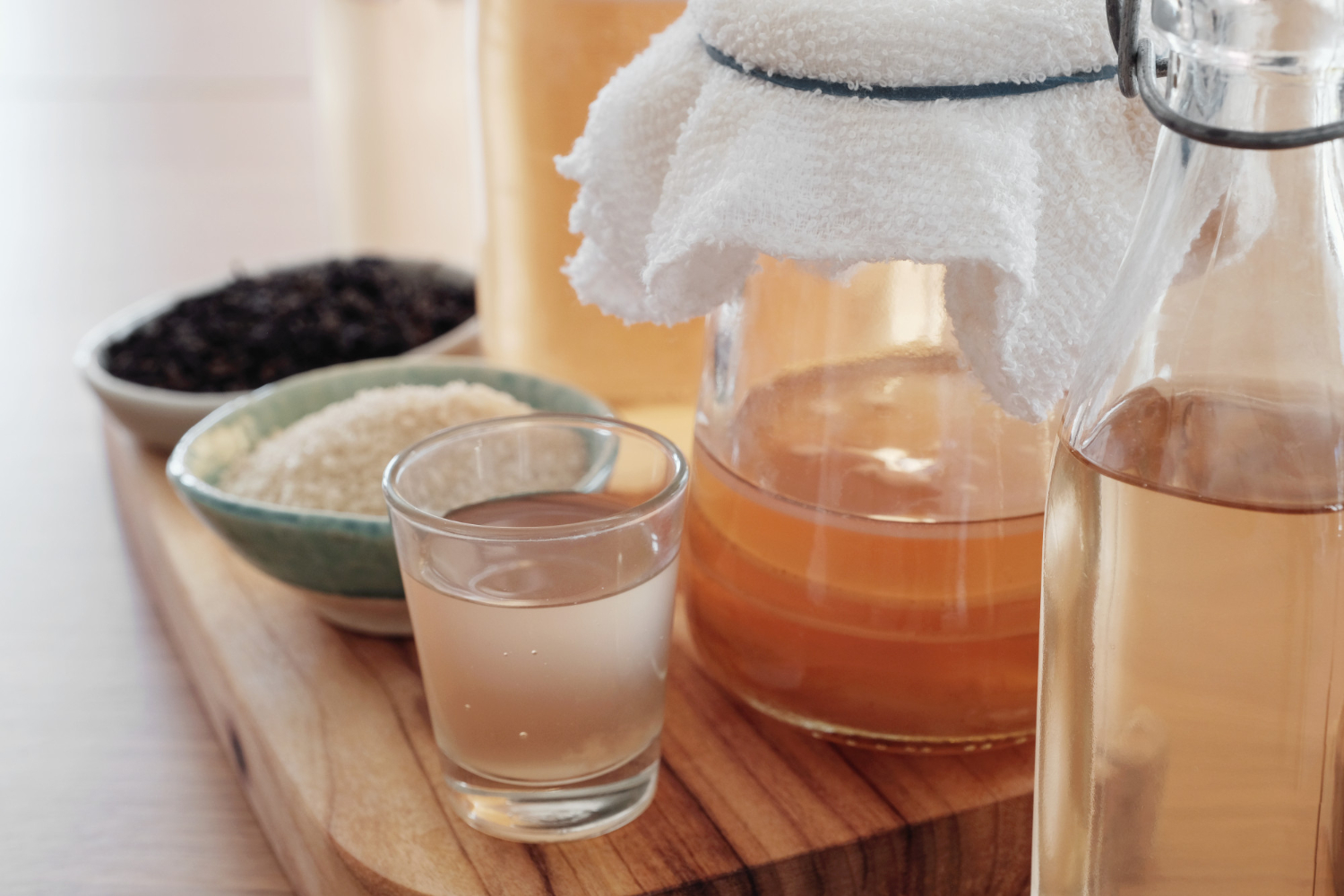Fermentation is an age-old technique used to preserve foods and give them unique flavors. In recent years, the popularity of fermented drinks, such as kombucha, kefir or kimchi, has exploded due to their health benefits. Not only are they rich in probiotics, but they are also packed with beneficial vitamins and enzymes. If you want to learn how to ferment your own probiotic drinks, you’ve come to the right place!
Why ferment your own probiotic drinks?
Before diving into the details of fermentation, it’s important to understand why you should consider this practice. Probiotic drinks are ideal for maintaining the balance of intestinal flora, strengthening the immune system and promoting healthy digestion. By producing your own fermented drinks, not only will you save money, but you will also have complete control over the ingredients used. Plus, it’s a fun and rewarding activity that allows you to create your own unique flavors.
Choice of ingredients
The key to good fermentation lies in the choice of ingredients. To get started, you’ll need a basic liquid, such as tea, milk, or even vegetable juice. Make sure the liquid you choose does not contain preservatives, as these could inhibit the growth of probiotics. Then you can add probiotic bacteria or yeast, called starter strains, to initiate the fermentation process. You can get these strains from specialty stores or even make them yourself from existing cultures.
The stages of fermentation
Fermentation is a process that requires time and patience. Here are the key steps to succeed in your fermentations:
1. Preparation
Before you begin, make sure all your equipment is clean and sterilized. This includes glass jars, wooden spoons and cotton pads used to line the jars. Cleanliness is essential to avoid unwanted contamination.
2. Mixture
Once you have prepared all your ingredients, mix them in a glass container. Make sure everything is well integrated and the starter strains are evenly distributed in the liquid.
3. Fermentation
Once the mixture is ready, pour it into clean glass jars and cover them with cotton pads. This will allow air to circulate while preventing contaminants from entering. Place the jars in a dark, warm place, ideally between 20 and 25 degrees Celsius. Leave to ferment for the recommended time for each type of drink.
4. Control and adjustment
During the fermentation process, it is important to regularly monitor the progress of your drinks. Check for bubbles, deposits or odor changes. If anything seems unusual, you may need to adjust the temperature or fermentation time. Be patient and experiment to find the right balance.
5. Conservation and tasting
Once your probiotic drinks have reached the desired level of fermentation, you can transfer them to airtight bottles and store them in the refrigerator. This will slow down fermentation and allow you to enjoy them for several weeks. Don’t forget to enjoy the fruit of your labor and share it with your loved ones!
Some additional tips
To maximize your chances of success, here are some additional tips to follow:
- Use filtered or spring water to avoid any unwanted contaminants.
- Don’t be tempted to skip steps or take shortcuts. Fermentation is a precise science that requires following the steps carefully.
- Be patient and don’t be afraid to experiment. Each fermentation can have different results, so have fun creating your own unique recipes and flavors.
- Share your knowledge with other fermentation enthusiasts. There are many online communities where you can ask questions, get advice, and share your successes.
Discovery of the unsuspected benefits of fermentation
Fermentation, beyond its ability to preserve food and provide an interesting palette of flavors, conceals often unsuspected benefits. Many are limited to its ability to produce probiotics, however, history and science show us that its benefits extend far beyond.
Fermentation: a rich cultural history
Fermentation, embraced by many cultures throughout history, has often been considered a gift from the gods. In some civilizations, fermented foods were reserved for kings and nobles. In Asia, for example, miso and tempeh were highly prized for their nourishing properties and their ability to strengthen the immune system. These ancestral traditions, passed down from generation to generation, bear witness to the recognition of the benefits of fermentation well before the scientific era.
A treasure for mental health
Recently, studies have shown that regular consumption of fermented foods can have a positive impact on mental health. The connection between the gut microbiome and the brain, often referred to as the “gut-brain axis,” suggests that probiotics found in fermented foods may help improve mood and reduce symptoms of depression and anxiety.
Antioxidants and other beneficial compounds
In addition to probiotics, the fermentation process also produces a variety of beneficial compounds, including antioxidants. These molecules help fight free radicals in the body, protecting against cellular damage and reducing the risk of chronic diseases.
An ally for digestion
Fermentation predigests food, making it easier for our system to break down and assimilate. Additionally, enzymes produced during the process help break down nutrients, making foods more digestible and nutrients more bioavailable to the body.
fermentations around the world: a taste and well-being adventure
Fermentation, practiced for centuries in various cultures, is not just a means of preservation or a source of probiotics. It is also a taste journey that reflects the heritage and traditions of the regions of the world. By exploring the different global fermentations, we discover a wealth of flavors and benefits associated with each specialty.
Diversity of traditions and tastes
Around the world, each region has developed its own fermentation technique, influenced by climate, geography and available ingredients. In Europe, German sauerkraut is famous for its tangy flavor and its benefits for digestion. In Asia, Japan offers natto, a fermented soy-based food, known for its beneficial cardiovascular properties.
Beyond flavors, fermentation is often integrated into cultural rituals. In Korea, preparing kimchi, a fermented condiment made from cabbage and spices, is a family tradition. Family members come together to prepare this essential dish together, thus strengthening social bonds.
Fermentation in tropical regions
Tropical regions, with their hot and humid climate, have also adopted fermentation as a means of preservation. Indonesian tempeh, made from fermented soybeans, is rich in protein and minerals. In the Caribbean, kassav, a fermented tuber, is made into a nutritious bread eaten daily.
The link with well-being
Each fermentation brings its own set of benefits. For example, Caucasian kefir is known to boost immunity, while Bulgarian yogurt promotes healthy skin. These ancestral traditions, based on empirical observations, are today supported by modern science.













